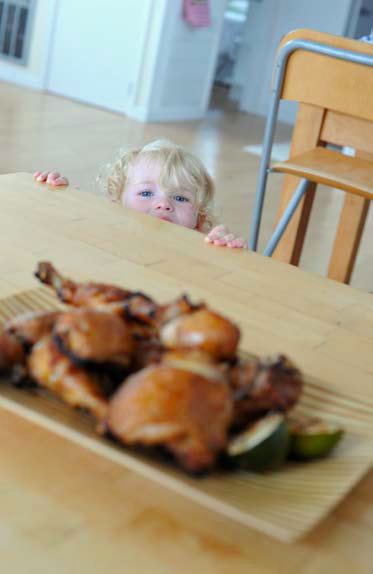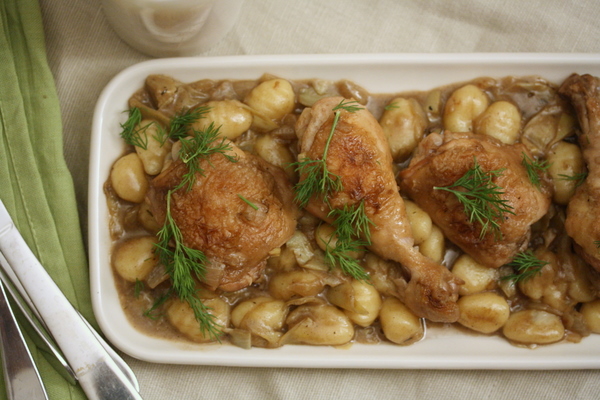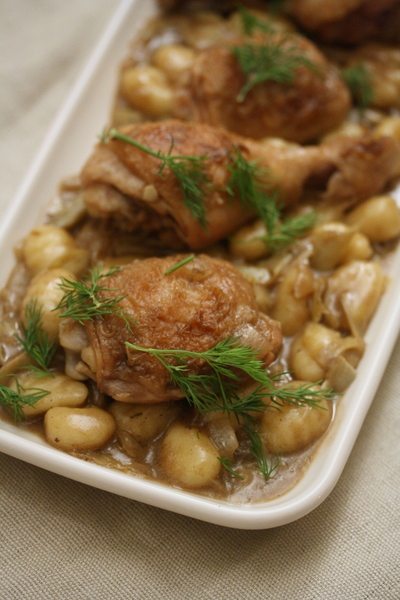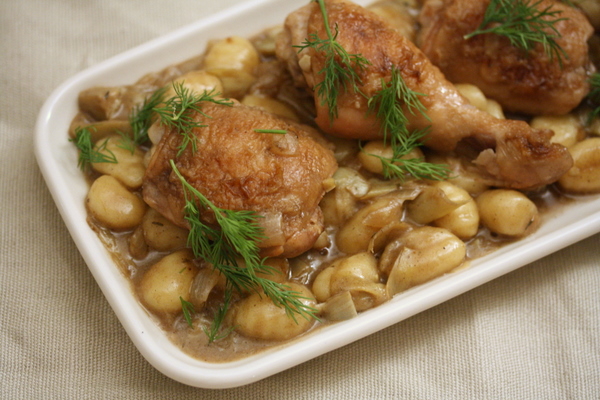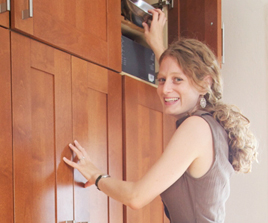
We started our Dude Food series this spring in order to mix up the usual BGSK offerings with interviews and submissions for and by dudes. We like to think of this section as the man cave below the BGSK kitchen. If you have ideas, become a dude food contributor!
You might remember our friend Keith from the early days of the blog as co-founder of Phoebe’s epic chili and stew cook-offs. Though Keith’s victory is debatable in the version we tell in our book (see page 116, the section opening for the Dating & Food section, for a picture!), he does make a mean pot of spiked, meaty chili. Over the years, as he’ll explain, Keith has become head chef of his group of friends’ extreme camping trips. Today, we’ve asked him to share his wisdom for cooking haute cuisine at 12,000 feet, as well as menus from his most recent trip to Yosemite.
Keith’s adventure cooking began several years ago in Mongolia when he caught a 26″ rainbow trout with a baby sapling for a rod and cooked it up over an open fire with herbs from a nearby meadow. Since then, he’s been trying to push the boundaries of gourmet food in extreme circumstances.
-Cara and Phoebe, THE QUARTER-LIFE COOKS
***
I lead a fairly typical life for a young college grad. I have a white collar job. I spend anywhere from 40-70 hours a week in an office, and when I do leave, for most of the year, it’s dark outside. I also live in a city where most of my exposure to wildlife comes in the form of mice or cockroaches. And it seems that despite my best efforts, I never do get away into the countryside as many weekends as I’d like. This is a bleak picture that I imagine all too many of you are familiar with. A temporary solution does exist though.
Three years ago my friends and I came up with this brilliant plan called the ECA (Extreme Camping Adventure). Pick a famous national park in the summer months, and there’s a good chance you’ll run into a crew of pasty white young men trying to feel all manly and in touch with nature. That could very easily be my friends and me. What’s makes our trips “extreme” though is a) the crazy amount of miles we fit into each day b) the awesome routes we take c) the sweet activities, such as white water kayaking, rock climbing, mountain biking, etc. d) the partying that goes on once we’re off the trail, and e) last but not least, the FOOD.
Camping is meant to be hardcore (i.e. manly). I’m not talking about what you do out of the back of your car or RV near some national forest. I’m talking about what you do on top of a 12,000-foot mountain after an 18-mile day on the trail with a heavy-ass pack on your back. You do it to get away from the comforts of the chair you spend most of your days sitting in and the couch where you spend many of your nights vegging out. All of this does not mean, however, that you can’t eat well.
There’s a perception that eating on the trail should purely be about fuel. It’s fine if that’s what you think. And it’s fine to buy those pre-packaged camping meals. But with a tad bit of effort and some creativity, you can enjoy haute-cuisine while gazing out at Half-Dome in Yosemite.
**Menus, Tips and Tricks**
Preparation: The key to gourmet meals on the trail isn’t the actual cooking. It’s all in the prep. Get ready to use A LOT of Ziploc bags. Once out in the wild, you don’t have the convenience of a spice rack two steps to the left, or a pantry full of boxes three steps to the right, so the key is to combine all ingredients possible beforehand and get rid of bulky packaging. Here’s an example:
Let’s say you want to make… oh, I don’t know… Ravioli with sun-dried tomatoes, sage and parmesan. Before you left your home, boarded a plane and hit the trail, you would combine oregano, sage, parmesan cheese, salt, pepper, and sun dried tomatoes in one bag. So that when you arrive all you have to do is buy some ravioli. Dump it out of its square, bulky packaging and into a freezer bag. Hike on up the trail. Make camp. Boil the ravioli. Drain the water. Mix in some olive oil and dump in your home-made package of spices. Voila! Grandma Buitoni has descended from heaven to grace you with the best national park cooking there is.
Now that you know how simple it really is, let me share with you two of the best hikes Yosemite has to offer and the meals you could cook while soaking in the great outdoors.
Disclaimer: I can’t claim credit for all these meals. I have to thank the people of Backpacker Magazine and the book Lipsmackin’ Backpackin’ for a lot of inspiration.
Note: All servings are for 6
Day 1
We settled into Yosemite this first night and hung out in the valley. Drinking whiskey and beer and getting everything finalized for an early start the next morning.
Dinner: Couscous with Chicken and Chickpeas
Ingredients: 3 pound chicken (hike it up from cooler or buy cans or pouches of it. Pouch chicken is way tastier than you think), 1 package couscous, 1 can chickpeas, 1/2 cup dried tomatoes, 1/4 cup dried carrots, garlic powder, salt and pepper
Preparation: Combine everything except the chicken in a ziplock plastic bag. Remember to rinse the chickpeas first. Carry the chicken separately.
In camp: Add enough water to cover. Stir. Set aside until couscous is cooked and chicken and veggies are rehydrated. Add the chickpeas (do not drain) just before serving.
Day 2
We started off with the next morning on a 31-mile shuttle hike around the north rim of Yosemite Valley. You simply cannot get better views. We wanted to break camp early so we had a quick, yet tasty breakfast. Our afternoon hike started with a 3-mile trek to the trailhead followed by 100+ switchbacks up the 2,500 feet of Tenaya Canyon (right part of the map). By that point we needed lunch. We ended our day with “oh my god” views of Half Dome.
Breakfast: Peanut Butter Banana Wraps
Ingredients: 6 tortillas, peanut butter, 6 bananas
Preparation: Take a tortilla. Spread peanut butter on it. Wrap banana inside. Eat.
Lunch: Avocado Chicken Wraps
Ingredients: 6 avocados, leftover chicken from the night before or 6 more pouches of chicken, 12 large tortillas. Mayo packets, if you so choose.
Preparation: Similar to breakfast, just take a tortilla and spread chicken, avocado and mayo all over. Wrap it up and enjoy.
Dinner: Basil Parmesan Ravioli
Ingredients: 3 packages of fresh mini cheese
ravioli (or other fresh pasta; freeze and eat within two days – we kept ours in a cooler in our car on the way up to the park), margarine (can last in the open, unlike butter), 1 cup crumbled sun-dried tomatoes, 3 tablespoon oregano, fresh basil leaves, 2/3 cup fresh Parmesan cheese, grated. Salt and pepper to taste.
Preparation: Pack the margarine in a zip-top bag with oregano, salt, and pepper. Place cheese, tomatoes, and fresh basil in three additional zip-top bags.
In camp: Bring water to a boil; add pasta and tomatoes. Cook according to package directions (usually three minutes). While pasta is cooking, chop basil leaves. Drain most of the water, then add butter and all herbs. Return to heat and stir until butter melts. Top with Parmesan cheese.
Day 3
We had a solid 12-mile day planned so we needed a solid breakfast to get us going. What’s better than bagels and eggs? We spent the day following the rim of the valley. We watched the sun climb over Yosemite Point. Climbed Eagle Peak. Walked along the face of North Dome. Hung our heads over Yosemite Falls, and peered over the edge of El Cap. Lunch happened at the summit of Eagle Peak. We ended the day bathing in a river and having dinner over a bluff that looked out onto the valley and back north towards El Cap, the most famous rock climbing face in the US.
Breakfast: Eggs and Bagels
Ingredients: 6 bagels, cream cheese (don’t worry, it lasts), margarine spray, 8 eggs, parmesan cheese
Preparation: Crack eggs the day before you begin your hike and put them in a Nalgene. If you want them to last even longer, buy a hard plastic egg carrying case. Eggs and cheese can make it for quite some time on the trail.
In camp: Scramble your eggs in a pan. Add parmesan and salt and pepper to taste. Meanwhile, find some reasonably clean sticks and toast your bagels over the stove.
Lunch: White Mountain Tortillas
Ingredients: Hummus, 10 slices provolone cheese, olive oil/butter for pan, 10 tortillas
Preparation: For each tortilla, place 1 tbsp of oil on pan. Smear hummus on tortilla, place cheese on top and heat in pan. Delicious.
Dinner: Cashew chicken
Ingredients: 2 1/2 cups instant rice, one and a half 7-ounce pouch chickens, 2 pearl onion, 1 bell pepper, 1 cup dried mushrooms, 1 1/2 cups unsalted cashews, 3 teaspoons garlic powder, 3 teaspoons powdered ginger, 6 takeout packets soy sauce.
Preparation: Combine rice and mushrooms in a zip-top bag. Place cashews, garlic, and ginger in a second zip-top bag.
In camp: Bring two cups of water to a boil. Chop onions and pepper. Add rice, mushrooms, and chicken to the pot and boil for two minutes, or until all water has been absorbed. Remove from heat and add onion, pepper, cashews, and spices. Stir in soy sauce.
Day 4
Camping on the side of a cliff face – not the brightest move. We had no shielding from the wind and no residual heat from the trees. Needless to say, it was not a restful night, and we woke up frozen! We needed a hot meal to start the day off. After breakfast, we cruised through the end of the hike, with only a little uphill as we walked down the now defunct roadbed of Old Big Oak Flat Road. We stopped for lunch in a meadow that had recently been through a wildfire, but was now growing back.
Breakfast: Peanut Butter Pancakes
Ingredients: Margarine spray, 3 cups pancake mix, peanut butter, syrup (steal some packets from McDonalds)
Preparation: Combine all of the dry ingredients in a zip locking plastic bag. Carry the peanut butter and oil separately.
In camp: Add 2 1/2 cups water to the bag. Squish well to combine, then add the peanut butter. Squish until there are no more large lumps of peanut butter in the bag. Heat a little oil in your pan. Snip off one end of the plastic bag and pour out enough batter to make 3 inch pancakes. When bubbles form on the top, flip. Serve hot.
Lunch: Salami and Cheese
Ingredients: 2 salamis, hard cheese (cheddar or parmesan), wheat thins
Day 5
After a night spent in the valley gorging on wings, pizza and beer, we spent a day white water rafting. Then the following morning found us up at the crack of dawn to get up to the northern part of Yosemite, to Tuolumne Meadows, for half a day of rock climbing then an overnight hike to Mt. Conness, the third highest mountain in the park. Lunch was a speedy affair as we had to get to our next trail head for a 6.5 mile hike in from Tuolumne valley to a pair of alpine lakes (Young lakes) at 10,000 ft. After breaking out some old orienteering skills and scrambling our way through a forest and around some ridges, we finally found the lakes and made camp just as the sun was setting. We really, really needed some food to warm us up since we were sleeping on snow.
Breakfast: Chocolate, Banana Oatmeal
Ingredients: 6 packets instant oatmeal, 1 packet hot chocolate mix, brown sugar, 1 can parmalat, 2 bananas, chocolate cookies crumbled (optional)
Preparation: Combine everything except the cookies in a zip locking plastic bag. If you are bringing the cookies, package them separately.
In camp: bring 6 cups of water to a boil, add the oatmeal and stir. Simmer until the oatmeal is cooked through. Serve topped with the cookies.
Dinner: Chicken Sunday Dinner
Ingredients: 2 packets of Stove Top brand stuffing, 2 7-ounce pouch chicken, 2 cup dried cranberries, 1-2 packages Yukon gold instant potatoes and 1-2 packages instant gravy
Preparation: Boil 3 cups water, then stir in stuffing. Add chicken and cranberries. Boil 2 cups of water and cook instant potatoes separately. In 3rd pan cook instant gravy with water. Mix all together and enjoy.
Day 6
We woke up cold and hungry despite our big dinner and got the day going with some hot food. Now I don’t want it to seem as if we weren’t enjoying this second, side-trip, but the going stayed tough. We left our packs in camp and followed swampy marsh area up to the second of the Young Lakes and past that onto a snow field. We never quite made it to the summit of Mt. Conness, but we felt real tough for even getting as far as we did without snow shoes. We eventually turned around and reversed our route, finding our way back to the car after an exhausting 12+ miler home.
Breakfast: Blue Mango Oatmeal
Ingredients: 5 packets instant oatmeal, 6 tablespoons dried blueberries, 3 tablespoons dried mangos, parmalat, brown sugar
Preparation: Combine all of the dry ingredients in a zip locking plastic bag.
In camp: Add 4 cups boiling water to oatmeal (or more if you like a thinner cereal.)
Day 7
Our second annual Extreme Camping Adventure ended with 24 miles of mountain biking and an epic 4th of July in Tahoe. It is an extreme trip, and an extreme menu, I highly recommend re-creating.


